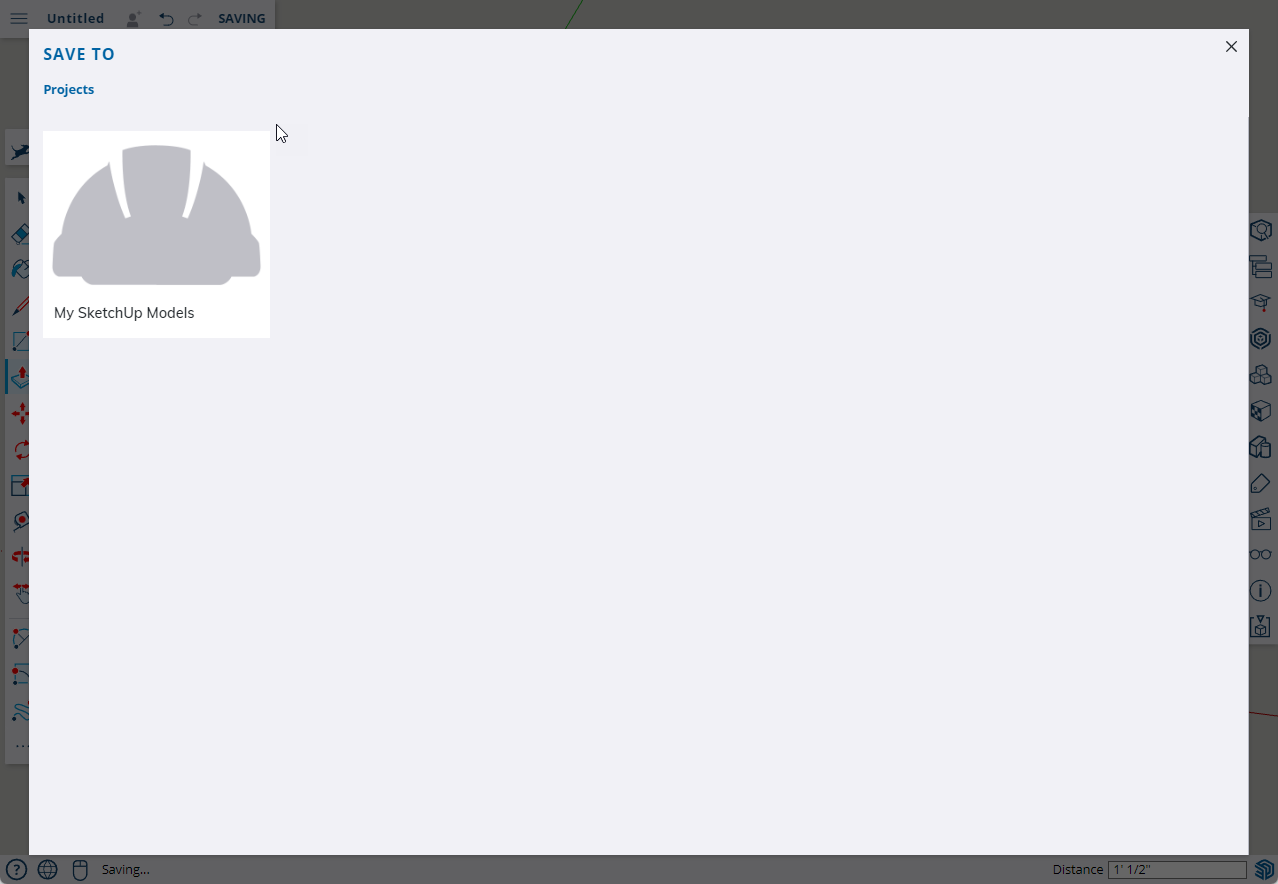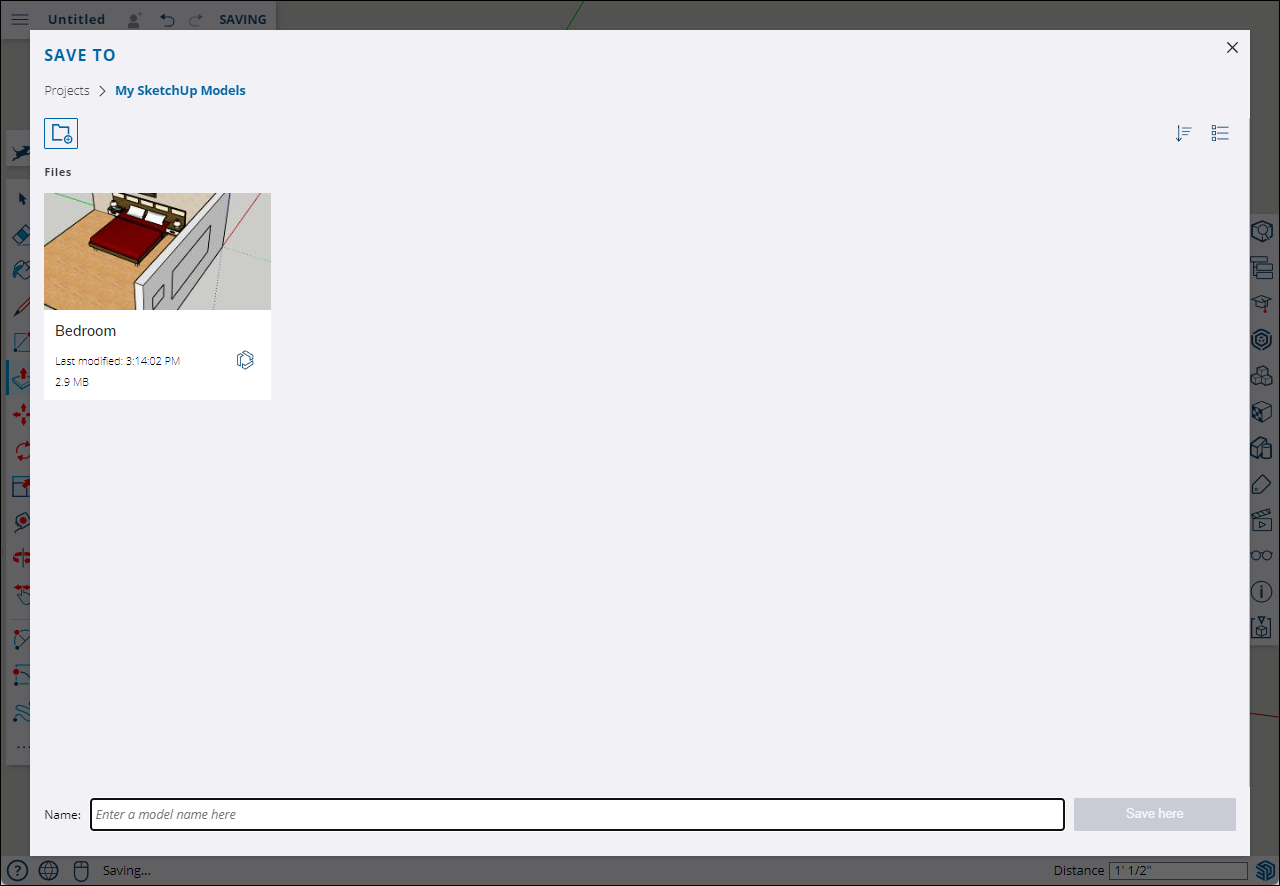Saving Models
After creating a new model, one of the first things you may want to do is save it to Trimble Connect. We'll show you how to save your model manually, how SketchUp for Web auto-saves and backs up your model, and how each revision is archived in Trimble Connect.
Saving Files
Saving your work is easy with SketchUp for Web and Trimble Connect. Once you've created a model, save it by following these steps:
- Select Untitled or Save in the Menu Bar.

- The Trimble Connect window appears. Choose what project you want to save your model in.

- In that project, name your model and select Save here.

After you save a model to Trimble Connect you can easily save any progress by clicking Save in the menu bar. We recommend saving manually before closing SketchUp for Web. You can also change the name of a file or overwrite another file using the Save As command in the Main Menu.
Auto-save and Backup
SketchUp for Web uses both auto-saves and backup files to help you make sure your models aren't lost to browser crashes, internet outages, or file corruption.
After the first time you save a model in Trimble Connect, SketchUp for Web auto-saves your current model every five minutes by default. Not sure if your model has been saved? Check the Main Menu bar in the upper left.

When SketchUp for Web auto-saves your model it also creates local backup, stored in your browser's cache. SketchUp for Web will attempt to load this backup file the next time you open it in the following cases:
- You exit without saving
- The browser crashes
- You lose connectivity
Recovered backup files load as new models, unassociated with the original file you saved in Trimble Connect. You can always use Save As to overwrite the file in Trimble Connect.
Revision History
Every time you save a model -- and every time SketchUp for Web auto-saves -- Trimble Connect creates a new version of your model. Going back to an older version of your model can help fix things if:
- Your model becomes corrupted
- You add geometry or components that make your model difficult to operate
- You want to revert back to an earlier, simpler version of your model.
To access revision history for a model, navigate to that model in either the Home tab or in Trimble Connect. Open the file options menu and select History. A sidebar showing each saved older version of your model appears on the right side of the Home page.

When you move your mouse over one of the saved older versions you will see an icon allowing you to open the older version of that model in SketchUp for Web.
When you are reviewing this older version of a model, any changes you make are temporary until you manually save the model. When you do save the model you can choose to restore this version of the model as the current version or save this version as a copy,
Downloading Files
If you need a copy of your SketchUp file -- or prefer to save and store your files locally -- follow these steps
- Open the model you want to download.
- Open the Menu and select Download.
- Choose the file format you wish to use (.skp, .png, or .stl).
- Click OK to download your model.
